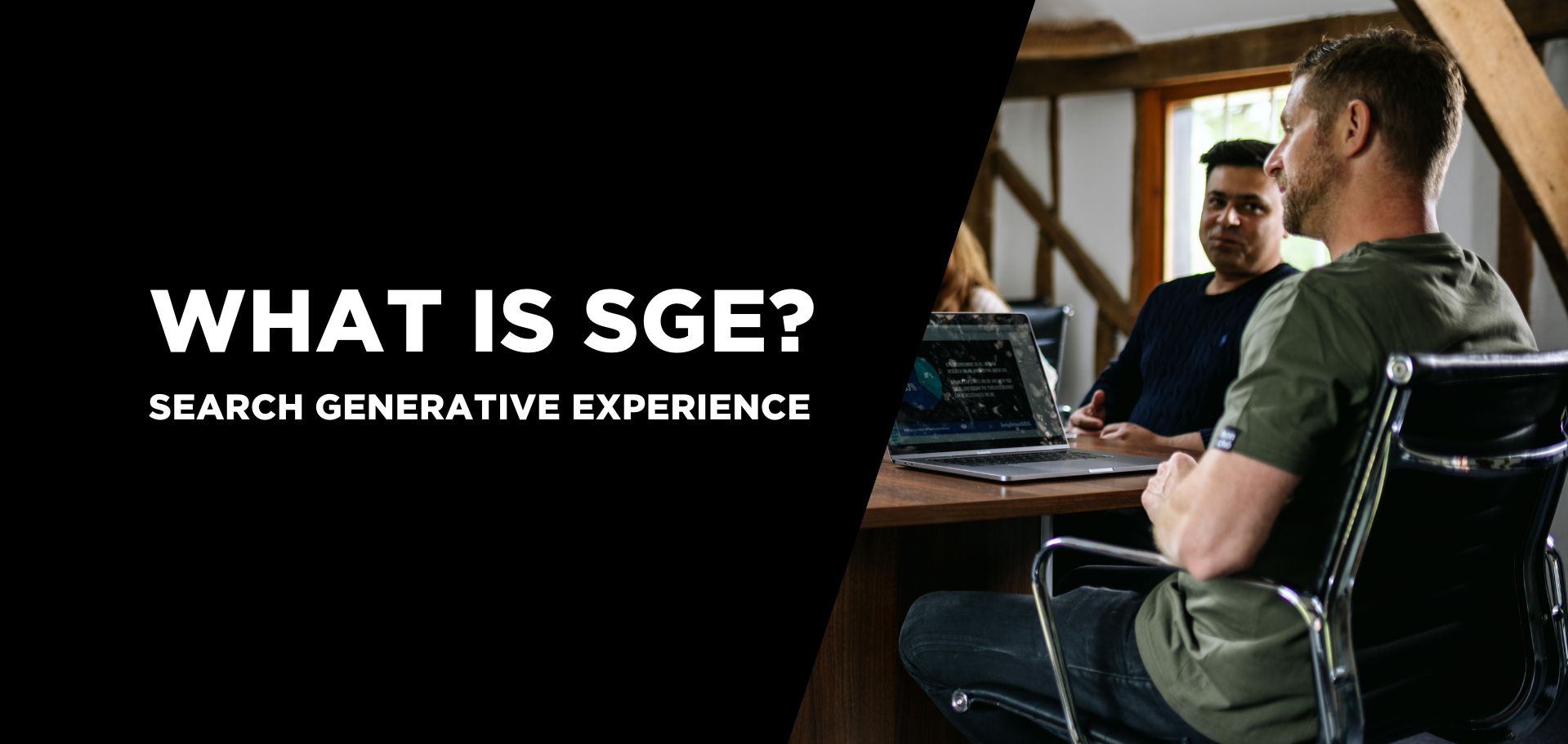2 min read
What is Google Search Generative Experience? (SGE)
What is Google SGE? Think of Google SGE as your helpful buddy on the search results page. Instead of making you click on different websites, it pulls...
 Most marketers will know that page load times are increasingly coming under the SEO spotlight. In November 2010, Google patented the use of page loading time as a ranking factor in their search algorithm. Since then Google has set out on a campaign to make the web faster. They have even developed a free tool called PageSpeed Insights to enable us to test the speed of our sites, and help us find out where they’re falling short. Google, the gatekeepers of the Internet, are effectively forcing us to optimise our sites for speed, lest we forfeit our rankings. But is it really for the greater good of the web? As much as it pains me to admit, Google has got it right this time. Page load speed is of huge importance to the consumers of the Internet, so it should be important to marketers too. According to TechCrunch, 60% of all Internet consumption happens on a mobile device, versus the remaining 40% that takes place on a desktop. With more people than ever before now browsing on their phones, there is an increasing demand for speed from the general online populous. It’s this demand that Google is responding to with their campaign for speed. But it’s not just the public that reaps the joys of a faster web. You can too. According to this study by Kissmetrics, it was discovered that by making your site 1% faster, you can get a 7% increase in conversion rates. This increase in conversions is directly linked to a decrease in abandonment by users. The same study found that 40% of people abandoned websites that took more than three seconds to load. And of the customers that did complete a transaction, 79% were far less likely to come back. Since Google have now made page speed their algorithm, it’s not just a greater conversion rate that’s up for grabs. Now it’s your site’s Google rankings, and the resulting traffic, that’s at stake too.
Most marketers will know that page load times are increasingly coming under the SEO spotlight. In November 2010, Google patented the use of page loading time as a ranking factor in their search algorithm. Since then Google has set out on a campaign to make the web faster. They have even developed a free tool called PageSpeed Insights to enable us to test the speed of our sites, and help us find out where they’re falling short. Google, the gatekeepers of the Internet, are effectively forcing us to optimise our sites for speed, lest we forfeit our rankings. But is it really for the greater good of the web? As much as it pains me to admit, Google has got it right this time. Page load speed is of huge importance to the consumers of the Internet, so it should be important to marketers too. According to TechCrunch, 60% of all Internet consumption happens on a mobile device, versus the remaining 40% that takes place on a desktop. With more people than ever before now browsing on their phones, there is an increasing demand for speed from the general online populous. It’s this demand that Google is responding to with their campaign for speed. But it’s not just the public that reaps the joys of a faster web. You can too. According to this study by Kissmetrics, it was discovered that by making your site 1% faster, you can get a 7% increase in conversion rates. This increase in conversions is directly linked to a decrease in abandonment by users. The same study found that 40% of people abandoned websites that took more than three seconds to load. And of the customers that did complete a transaction, 79% were far less likely to come back. Since Google have now made page speed their algorithm, it’s not just a greater conversion rate that’s up for grabs. Now it’s your site’s Google rankings, and the resulting traffic, that’s at stake too.

2 min read
What is Google SGE? Think of Google SGE as your helpful buddy on the search results page. Instead of making you click on different websites, it pulls...

5 min read
Discover the power of high search volume keywords and how to effectively use them to boost your online presence and drive maximum impact.

2 min read
We're delighted to officially announce our partnership with Eflorist, one of the world’s leading flower delivery brands with over 54,000 local flower...
1 min read
At PubCon, Google’s Matt Cutts indicated that ‘load time’ may be another ranking factor to their ever growing list, when determining how websites...
What are AMPs? You may have heard the acronym AMP generating buzz in the digital world and be wondering what the fuss is all about. Google has been...
1 min read
To further enhance the rumours that Google are going to introduce ‘Load Time’ as one of their ranking factors in 2010, Google have launched a new...